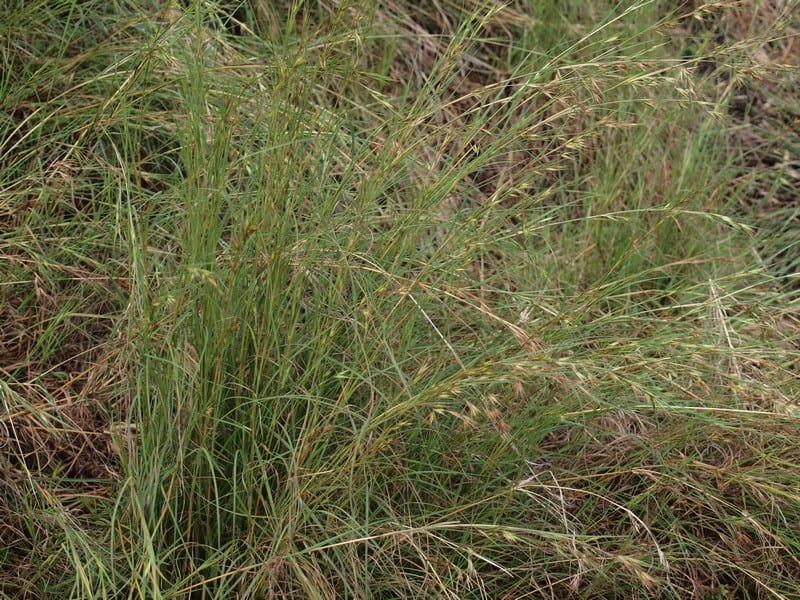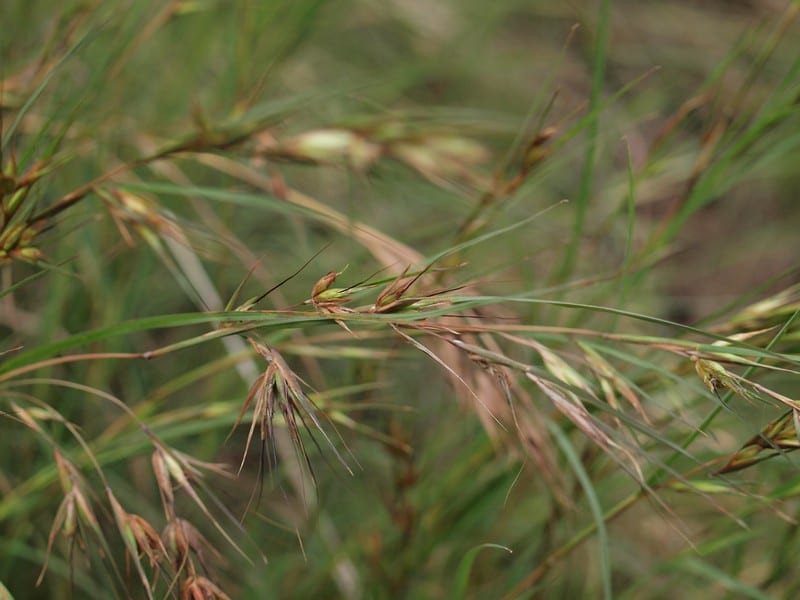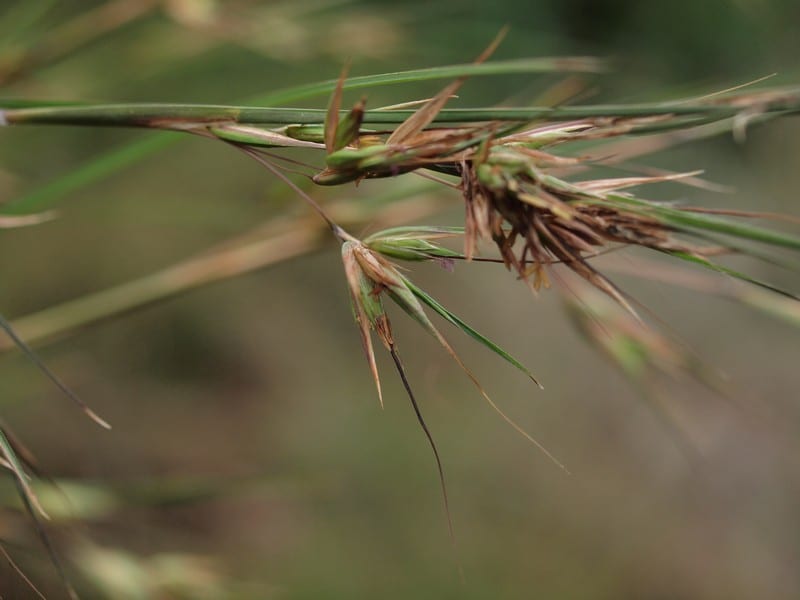Kangaroo grass
Themeda triandra, Fam. Poaceae






Kangaroo grass is one of Australia's most widespread native grasses, due to its resilience and adaptability to Australia’s harsh environmental conditions. Its attractive tufty appearance and low maintenance requirements have seen this grass become a feature of many modern landscaped gardens. Kangaroo Grass is often confused with Barbed-wire Grass (Cymbopogon refractus) or the introduced Grader Grass (Themeda quadrivalvis).
| Weed Category: | |
| Weed: | No |
| Form or habit: | Grass or grass-like plant |
| Family: | Poaceae |
| Leaf: | Simple Unknown Individual leaves grow to 50cm, and between 2 and 5mm wide. These leaves have an acutely pointed tip and turn to a rusty brown colour when mature. The similar barbed-wire grass has leaves that produce a spicy citrus odour when crushed, helping to distinguish the difference. |
| Flower conspicuous: | Inconspicuous |
| Flower colour: |
Red, Brown |
| Flower description: | |
| Fruit conspicuous: | Conspicuous |
| Fruit colour: |
Brown, Red |
| Fruit: | Dry |
| Fruit description: | The seed head is relatively large and often reddish brown in colour, with a drooping appearance. These heads are clustered in appearance along the spike and become papery when old. |
| Habitat: | Beach strand, coastal dune, grassland, open forest, woodland. |
| Distribution | Can be found along the entire eastern districts of Queensland, down to Tasmania and sporadic areas throughout central and west Australia. |
| Food source for: | It is an important food source for a range of butterfly larvae, grazing feeders like the grey kangaroo, and birds like native finches who thrive off the seed. |
| Toxicity: | No toxicity known |
| Origin: | Australia |
| Notes: | |
| Information sources: | Melzer R. & Plumb J. (2007) Plants of Capricornia. |